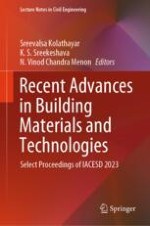This book presents select proceedings of the International Conference on Interdisciplinary Approaches in Civil Engineering for Sustainable Development (IACESD 2023) hosted under the aegis of the Group of Twenty (G20) and Civil 20 (C20) at Jyothy Institute of Technology, Bengaluru, India. The topics covered in this book are sustainable materials with low embodied carbon, such as recycled steel, reclaimed wood and alternative binders like geopolymer concrete; renewable materials like bamboo and straw; energy-efficient technologies, including solar panels, energy-efficient insulation; and smart building systems. This book serves as a resource material for researchers and industry professionals interested in developing solutions for sustainable and resilient infrastructure that aims for communities with net zero targets.
